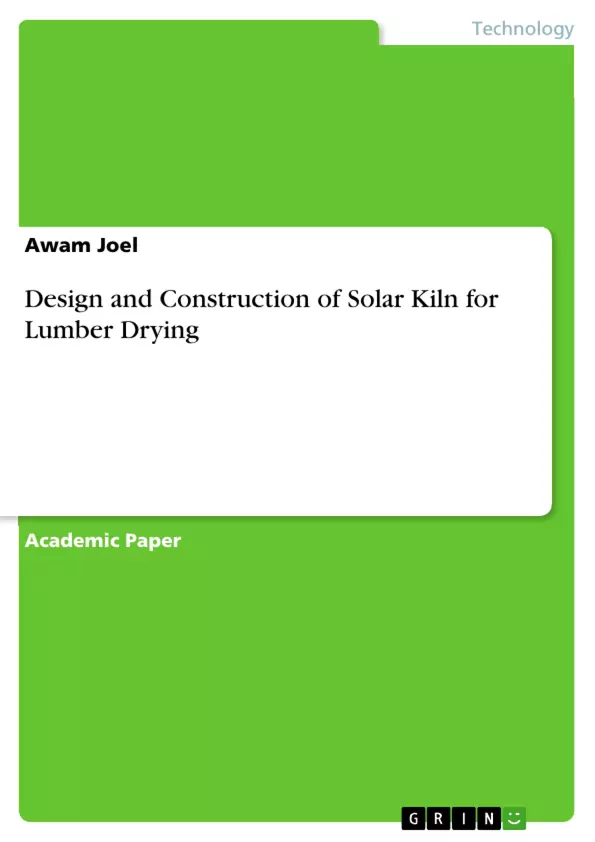This research aims to design and fabricate a solar kiln dryer that uses a solar panel to trap the sun’s rich energy and also the design of an inverter that converts the direct current of the sun to an alternative current that will charge the battery and power heater element for drying. The principal mode of heat transfer is convection. The temperature of the incoming stream of air is raised by the heating element, a circular motion fan drives the heated air uniformly through the heating chamber, in this way heat is convectively transferred from the hot air to the cold air.
Wood is a hygroscopic material which gains moisture content as a result of changes in humidity. Hygroscopicity is one of the most distinctive properties of wood. Any kind of wood product absorbs and desorbs moisture from the surrounding air until it reaches equilibrium moisture content (EMC), a balance point between the wood’s moisture content and that of the surrounding environment.
Fresh cut lumber contains a great deal of water. If the water is not removed, the lumber can’t be used to produce a high quality finished product. Properly dried lumber sells for a higher price and is much easier to work with than lumber that have not been dried. When lumber is well dried it machines better, glues better, and finishes better. Drying also improves the strength of the lumber, kills infestations, hardens pitch, preserves colour, reduces weight and controls shrinkage. Lumber that is not dried under controlled conditions is prone to warping, staining, and other degradations that diminishes its selling price and workability.
Table of Contents
- Abstract
- Introduction
- Experimental
- Results and Discussions
- Conclusion
- References
Objectives and Key Themes
This research project aims to design and construct a solar kiln dryer capable of efficiently drying lumber using solar energy. The project investigates the optimization of various design factors for efficient solar energy absorption, heat transfer, and air circulation.
- Design and fabrication of a solar kiln dryer
- Optimization of drying chamber dimensions
- Efficient absorption of solar energy
- Uniform hot air circulation
- Heat transfer mechanisms in the drying process
Chapter Summaries
- Abstract: This section provides a brief overview of the research objectives, focusing on the design and construction of a solar kiln dryer that utilizes a solar panel to capture solar energy and convert it to power a heating element for drying lumber.
- Introduction: This chapter explores the importance of drying lumber for producing high-quality finished products. It discusses the hygroscopicity of wood, explaining the relationship between moisture content and the surrounding environment. The chapter also delves into the benefits of controlled drying, highlighting the potential drawbacks of uncontrolled drying methods.
- Experimental: This chapter outlines the factors considered in the design of the solar kiln, including the optimal dimensions for the drying chamber, the best angular position for the solar panel, and the most effective fan placement for uniform air circulation. The materials used for constructing the kiln and the specific steps involved in its construction are also detailed.
Keywords
This research focuses on the design and construction of a solar kiln dryer for lumber drying. Key keywords include solar kiln, solar panel, inverter, drying chamber, heat transfer, moisture content, and wood shrinkage. The research utilizes practical design principles to optimize the drying process while minimizing energy consumption and environmental impact.
- Quote paper
- Awam Joel (Author), 2015, Design and Construction of Solar Kiln for Lumber Drying, Munich, GRIN Verlag, https://www.hausarbeiten.de/document/471505


